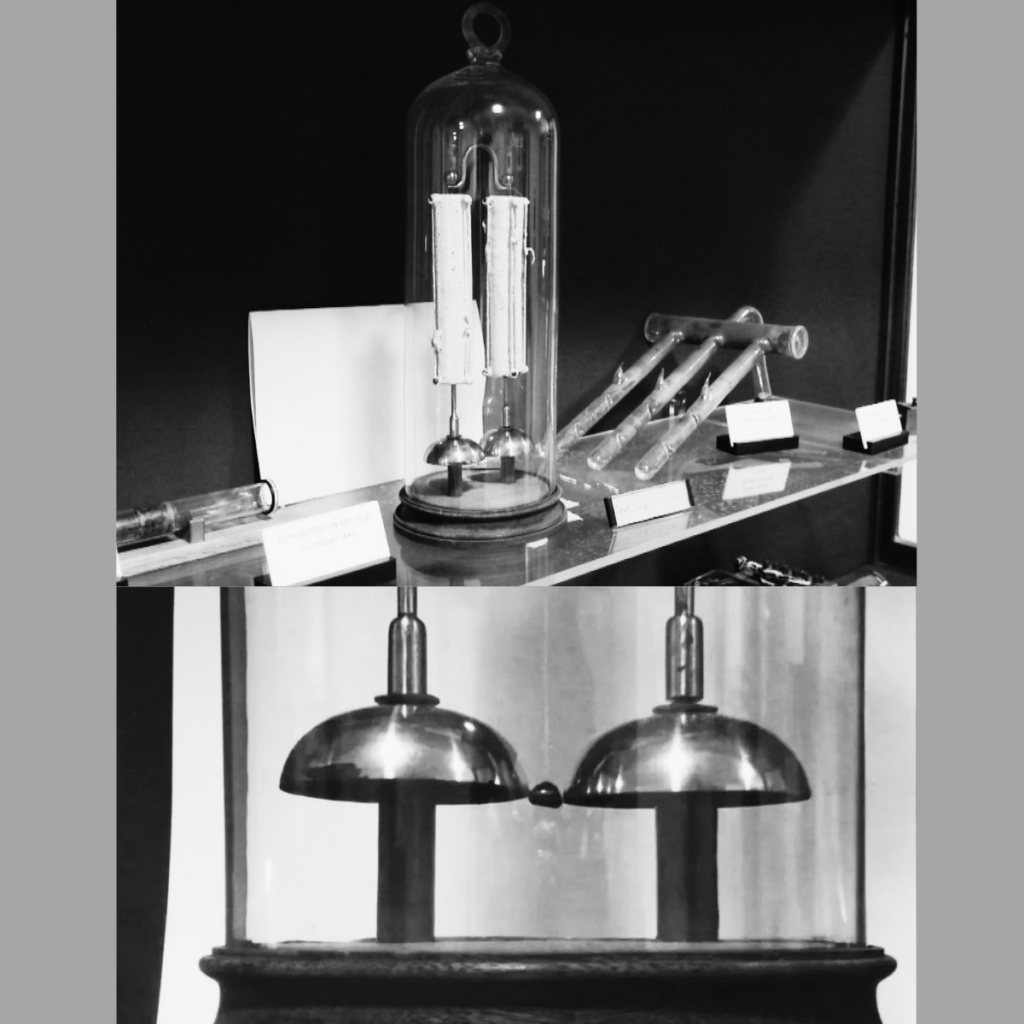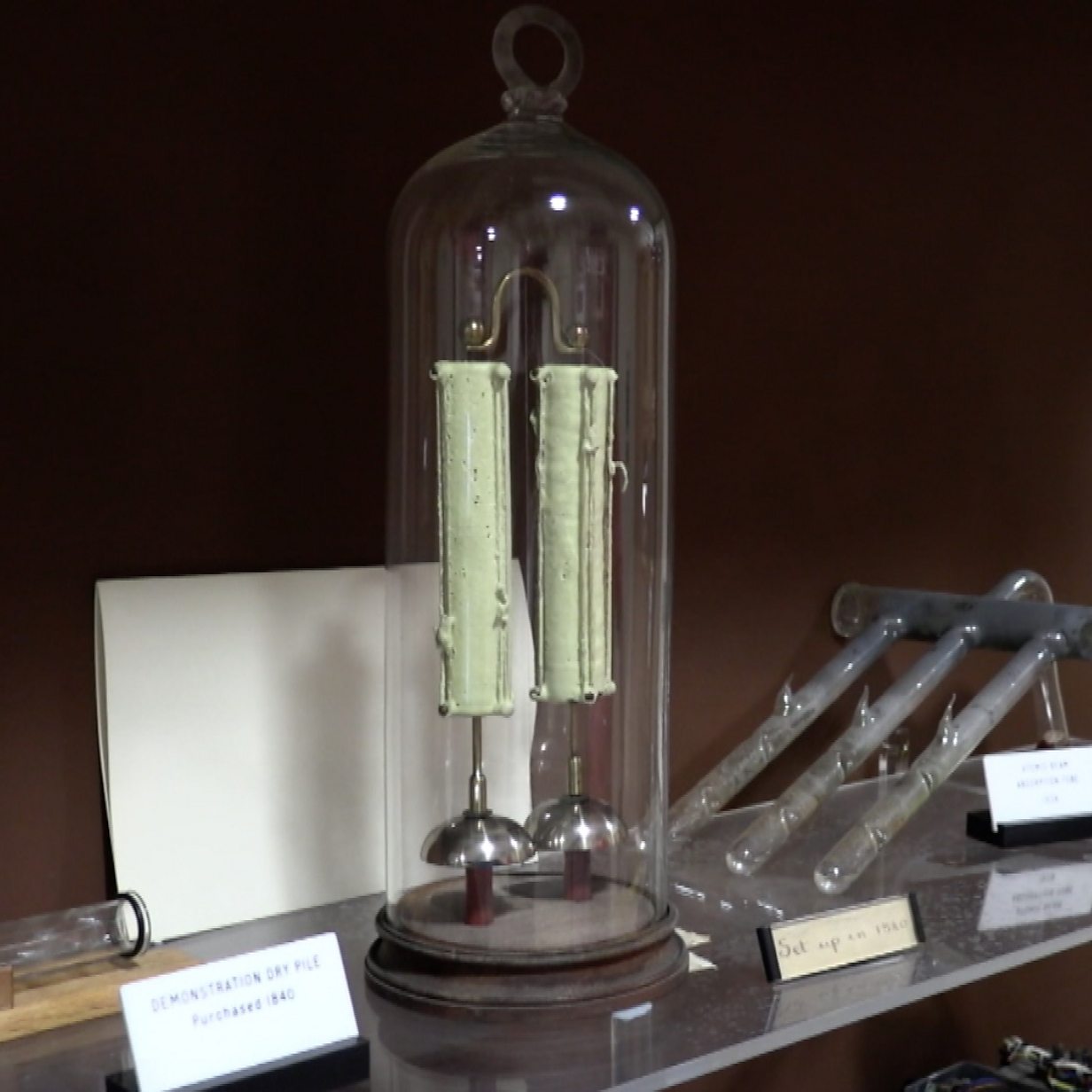
The Mystery of the Continuously Functioning Battery From 1840

A battery at the University of Oxford has been incessantly ringing two bells for 175 years—but no one knows exactly why it’s lasted so long.
In the mid-1800s, Robert Walker, a physics professor at the University of Oxford, acquired an interesting device. It was a battery designed to propel a hanging metal ball quickly back and forth, between two small bells. Today, 175 years after it was manufactured, the Oxford Electric Bell, as it is often referred to, is still ringing—in fact, it is said to have rung over 10 billion times.
Built by Watkins and Hill, a London instrument-manufacturing firm and with a note attached in Walker’s own hand reading “Set up in 1840,” the battery would eventually come to be displayed at the University’s Clarendon Laboratory.
How exactly has the apparatus, dubbed the “world’s most durable battery” by the Guiness Book of World Records, functioned for so long? No one knows for sure. That’s because, as Koebler points out, opening the device could potentially “ruin an experiment to see how long it will last.”
We have a good idea about the basics of its composition, however. It is made up of dry piles, one of the first forms of electric batteries originally developed in the early 19th century by priest and physicist Giuseppe Zamboni.
“They use alternating discs of silver, zinc, sulfur, and other materials to generate low currents of electricity,” writes Koebler. He continues:
“What the piles are made of is not known with certainty, but it is clear that the outer coating is of sulphur, and this seals in the cells and the electrolyte,” AJ Croft, a former researcher at the Clarendon Laboratory, wrote in a 1984 paper describing the bell in the European Journal of Physics. “Piles similar to this were made by Zamboni, whose batteries were constituted of about 2,000 pairs of discs of tin foil glued to paper impregnated with zinc sulphate and coated on the other side with manganese dioxide.”
Luckily for anyone who may be stationed nearby, the bell is not incessantly dinging like some possessed alarm clock. It’s actually barely audible, because the charge is so low—the metal ball responsible for the ringing only delicately vibrates between the two bells.
In order to solve the mystery of the Oxford Electric Bell once and for all, researchers will likely have to wait until either the battery finally loses its charge or else the ringing mechanism breaks on its own from old age.
For now, though, the contraption stands as the “longest running science experiment,” according to Mental Floss. The second longest? That would be the Beverly Clock at the University of Otago in Dunedin, New Zealand, which runs with the help of changes in atmospheric pressure and continues to tick-tock despite only last being rewound in 1864.